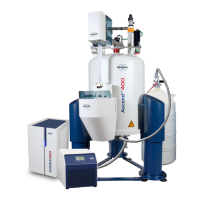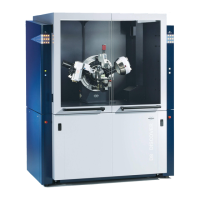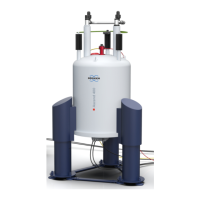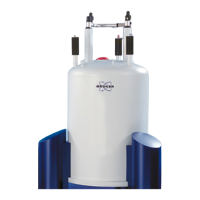Environment and Site Survey Measurement
H157654_9_011 59 / 120
7.3.3.2 Guidelines for AC EMF Interference
Between 1 Hz and 10 Hz: NMR systems are usually more sensitive to external disturbances
in this frequency range. It is suggested to stay below a straight line defined by 70 nT at 1 Hz
and 700 nT at 10 Hz in a log/log magnitude/frequency plot. These are 0 to peak values. See
figure below.
Above 10 Hz: Maximum 700 nT magnitudes (0 to peak) can be tolerated for interferences
with frequencies above 10 Hz.
Figure7.10: Specification Framework with the Magnetic Field Represented as 0 to Peak Values
7.3.3.3 Reducing AC EMF Interference
Two Bruker technologies help to suppress the DC field perturbations:
• Modern magnets with EDS
TM
technology (External Disturbance Suppression) efficiently
suppress AC interferences by a factor ~25-10000, depending on the model and distur-
bance frequency. Above 1 Hz, one can generally state: the higher the frequency the bet-
ter the suppression and the less sensitive NMR is to interferences.
• The advanced digital lock (if present) further suppresses the field fluctuations at the sam-
ple. Depending on various parameters, its efficiency varies considerably.
7.3.4 HF Interference
The NMR instrument is effectively a very sensitive radio frequency receiver. Possible sources
of interference are local radio or television broadcasts, low Earth orbit satellite systems, and
signals emitted by personal paging systems. Of particular concern will be interference at fre-
quencies at which NMR experiments are carried out. Although the interference effects will de-
pend greatly on the strength of the transmitter, as a rule of thumb only broadcasting transmit-
ters located within a radius of approximately 5 kilometers (3 miles) are likely sources of inter-
ference.
HF interference may also occur between two or more spectrometers located in close proxim-
ity and operating at the same nominal 1H resonance frequency.

